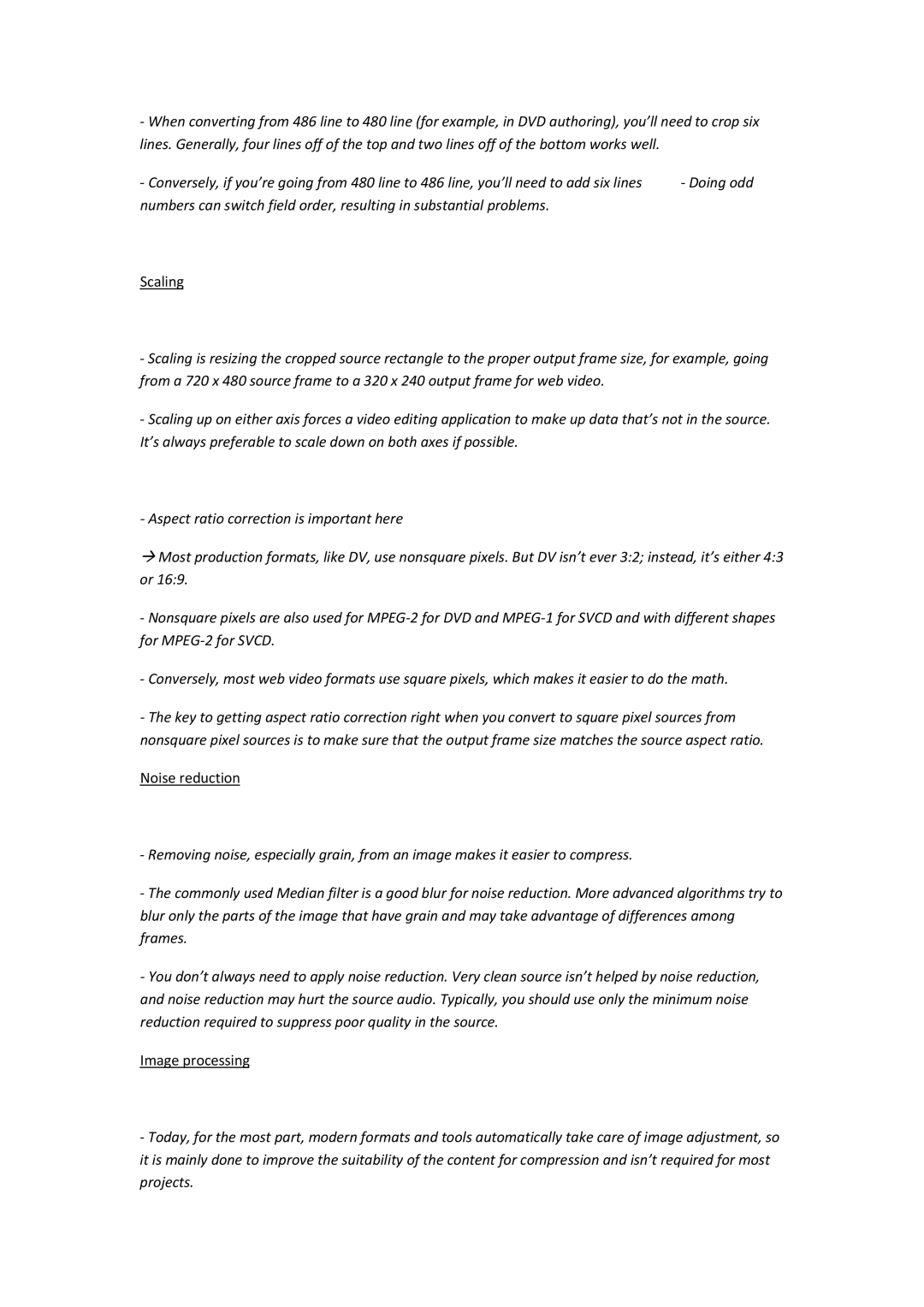‐When converting from 486 line to 480 line (for example, in DVD authoring), you’ll need to crop six lines. Generally, four lines off of the top and two lines off of the bottom works well.
‐ Conversely, if you’re going from 480 line to 486 line, you’ll need to add six lines | ‐ Doing odd |
numbers can switch field order, resulting in substantial problems. |
|
Scaling
‐Scaling is resizing the cropped source rectangle to the proper output frame size, for example, going from a 720 x 480 source frame to a 320 x 240 output frame for web video.
‐Scaling up on either axis forces a video editing application to make up data that’s not in the source. It’s always preferable to scale down on both axes if possible.
‐Aspect ratio correction is important here
ÆMost production formats, like DV, use nonsquare pixels. But DV isn’t ever 3:2; instead, it’s either 4:3 or 16:9.
‐Nonsquare pixels are also used for MPEG‐2 for DVD and MPEG‐1 for SVCD and with different shapes for MPEG‐2 for SVCD.
‐Conversely, most web video formats use square pixels, which makes it easier to do the math.
‐The key to getting aspect ratio correction right when you convert to square pixel sources from nonsquare pixel sources is to make sure that the output frame size matches the source aspect ratio.
Noise reduction
‐Removing noise, especially grain, from an image makes it easier to compress.
‐The commonly used Median filter is a good blur for noise reduction. More advanced algorithms try to blur only the parts of the image that have grain and may take advantage of differences among frames.
‐You don’t always need to apply noise reduction. Very clean source isn’t helped by noise reduction, and noise reduction may hurt the source audio. Typically, you should use only the minimum noise reduction required to suppress poor quality in the source.
Image processing
‐Today, for the most part, modern formats and tools automatically take care of image adjustment, so it is mainly done to improve the suitability of the content for compression and isn’t required for most projects.
